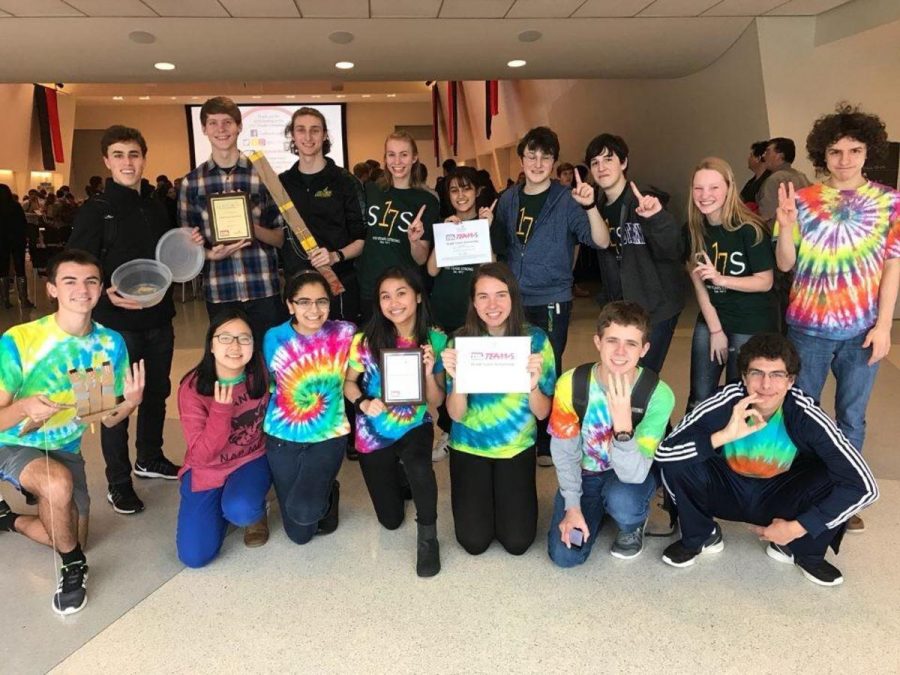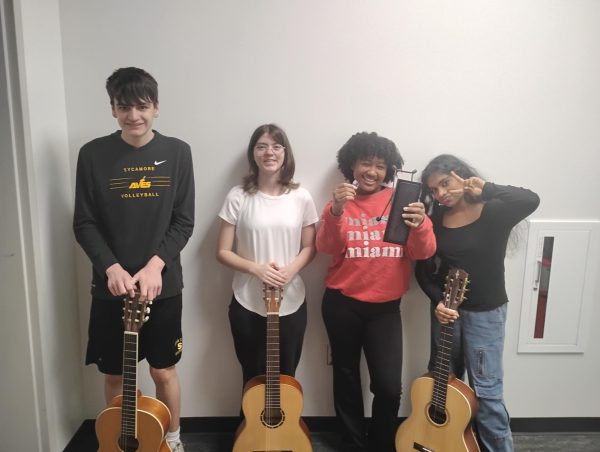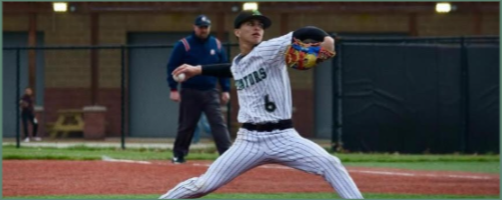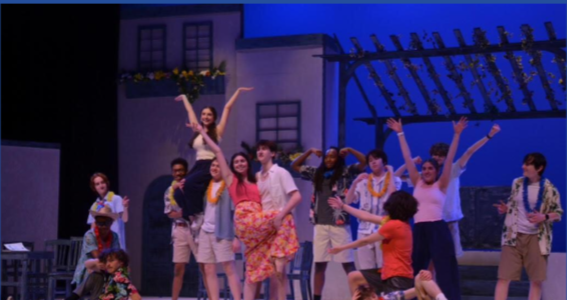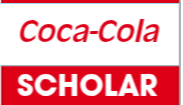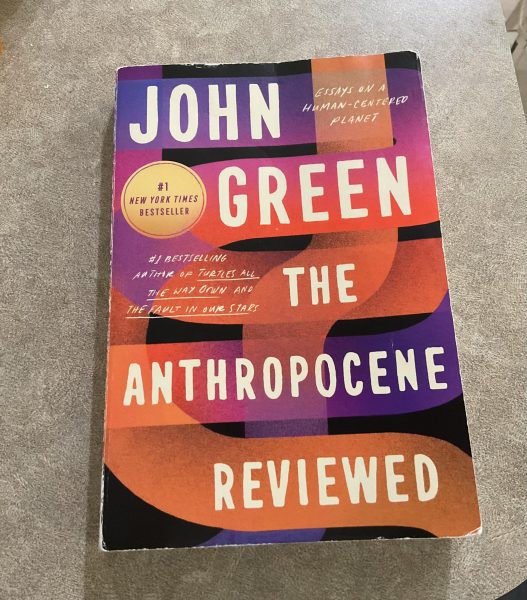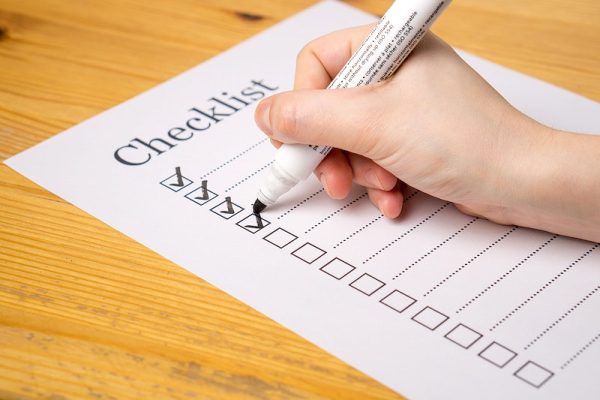Engineering TEAMS achieve victory
PUT YOUR HANDS UP. SHS’ teams pose with their robot creations and awards. They were challenged to design and build mechanical hands to transport water bottles. The seniors received first overall and the juniors got third.
On Feb. 28, 2017, SHS achieved success when one group of juniors and one of seniors represented at the TSA TEAMS (Tests of Engineering Aptitude, Mathematics, and Science) competition at UC.
The senior team, consisting of Aaron Charnay, Benjamin Charnay, Justin Banke, Joshua Glauser, Patrick Tosh, Supriya Malla, Laura Setser, and Isabelle Augustin ranked first in Division 9 (based on school size) and first overall.
The juniors, Jenna Bao, Jodie Lawson, Matthew Schwartz, Yvanna Reyes, Harsimran Makkad, Matthew Isakson, Max Snyder, and David Godar, ranked second in Division 9 and third overall.
The event is split into 9/10 and 11/12 categories, and SHS typically has one team in each one. However, this year ended up with two groups competing against one another. It was the first time at TEAMS for the seniors and the second for the juniors.
“Going into it… I really didn’t know what to expect, but working with everyone made the experience memorable and hype,” Malla said.
Both groups met in science teacher Mrs. Julie Haverkos’ room once a week in the weeks leading up to the event in order to research and prepare an essay.
The essay was to be completed prior to Feb. 28, a change from previous years in which each team wrote three timed essays on site. The prompt was to identify a source of renewable energy and propose a solution to one problem associated with it. After extensive consideration, both groups ultimately wrote on wind energy.
The competition also released eight topics to prepare for, one for each team member, all centered around the annual theme of “Engineering the Environment.” These included water treatment, smart cars, and global climate change.
The event at UC had two main parts: multiple choice and a building challenge. The research pertained to the 90-minute, 80-question collaborative multiple choice test.
“We had to work together to solve problems. The most challenging part was also the most fun, having to learn the material and then apply it all within 90 minutes,” Benjamin Charnay said.
Then, in the second half of the event, groups were challenged to design and create “robot hands” out of designated materials that could lift and move a bottle of water. Participants were not aware of the mission beforehand and had just over an hour to execute it.
These creations were then judged on the speed and accuracy of task’s (moving the bottle) conclusion, as well as the “cost” based on how many materials were used.
“It was such an awesome experience solving complex and real-world physics problems. It was cool to be able to freely collaborate with my teammates both in figuring out difficult problems and building the robotic arm,” Glauser said.
Finally, each group had the opportunity to participate in the optional egg drop. Only the juniors chose to participate, however their contraption was unable to successfully protect the egg from a 28-feet drop.
At the end of the day, both teams scored well on the multiple choice sections. The junior team, ranking third overall, received a scholarship of $3000 to the University of Cincinnati College of Engineering and Applied Science, and the seniors in first got a $5000 scholarship.
Soon, both teams will hear back regarding whether their total scores, including the building and essay evaluations as well. The top three in the state will be eligible for the national competition in Orlando, FL this summer.
“I would suggest any underclassmen interested in mechanical engineering to get involved in the TEAMS competition,” Tosh said.
Your donation will support the student journalists of Sycamore High School. Your contribution will allow us to purchase equipment and cover our annual website hosting costs.


